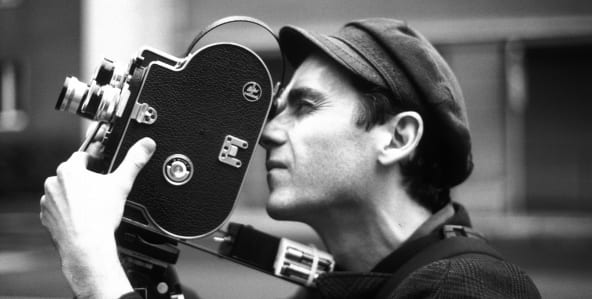Lost Book Found uniquely captured a serious of ways and means of documenting within an environment. The film truly gave me a reflecting point to see how the small, subtle factors in my environment, the ones that define its culture, interconnect with and to the other people living here. Regarding our current project to create and capture the essence of a place within a visual narrative, this source acts as an inspiration towards how to connect self to others, self to society, self to someone we never knew but felt like we did. Further, the film serves as a method and means of formatting, documenting, and portraying large cultural ideas and societal norms within a given environment. The commentary on how we often over think/oversee these subtle factors or shifts create a diverse effect on us. The overall manifestation of creating this real person and owner of the book within the documentation style and psychological connection to the filmmaker is a great example of how to establish and illustrate a personal narrative and connection of ourselves within a given environment.
The film’s overall tone alluded to the importance (and lack of it) of a distinct place in time and history. The sometimes creepy yet informative voice narrating Lost Book Found gave an exposed-feeling to this idea of the city. Further, these techniques implemented by Jem Cohen brought up how much we miss, what we don’t catch, and who we see but don’t remember in a given environment, along with how they influence us. We also a look into human behavior and how we act as a society…the weird things we do, the truth about our kindness- all of it. Of all the emotional feelings and tones, whether its curiosity or a murder-mystery-like feeling, Cohen hits the hammer on the head of capturing the lonely self in a city one feels overly connected with.
Cohen’s use of distinct objects to connect a storyline between the book, the narrator’s life and the time/state of New York in history takes a new look into documenting such an iconic film setting. Lost Book Found houses great examples of unique camera angles, crafted from Cohen’s secretive, day-to-day filming. The angles that he implements in the film tell a real, unedited, unscripted story of the people and culture of the city. Additionally, his abundance of clips, collected with no script or keen idea, allow for an unhealthy hoarding of video footage, which he managed to sift through and piece together film. This choice to film everything and sift later, rather than having a set idea on what factors he absolutely wanted to track, avoided mainstream filmmaking approaches and allowed for the one-of-a-kind product that is Lost Book Found.
Cohen’s ability to create this work alone allowed him to better connect with and portray the people he encountered within his narrative. Additionally, by documenting, writing, and filming each aspect of the film, he was able to reference real-life objects he narrated about and use as visual in the clips, which richen the story and the overall idea of the work- documentation. A major component of Cohen’s creative process, archival footage, was key in setting the date and time to define the distinct environment and context of the city, further aiding our understanding in the objects, people, industries, and events we pick up through various forms of documentation presented in the film. His ability to film with no set schedule or a shot list, to capture any and everything, allowed for more flexibility and availability to shift the story as time evolves within the city, allowing for an organic transfer of ideas. Lastly, his inclusion of distinct people and portrait-like shots at the end of the film almost define a culprit for the inventor of the psychological game, aka the mystery author of the lost book found, which beautifully ties the various explorations of the documentary together.
Cohen’s knowledge and subtle gradation of fading in/laying over gradient filters within clips create an ominous tone at the beginning, and throughout, the film, setting defining points in the documentary’s plot. The voiceover at the beginning, spoken in an almost scary tone before the title’s introduction, set the eerie mystery in the connection of the different documented elements of the city. The overall monotone narrative of the filmmaker, especially at the beginning with selling peanuts, gives us insight for the entire documentary and his personality. The gradation of his voice, going from his thoughts to clips of vocal documentation created an ominous tone, almost horror-like scene to further connect the psychological reminisce of the narrator’s connection to randomly remembering parts of the book around different areas of New York City. An auditory storytelling device, music, played an integral role in Cohen’s film. The different genres of background music; scary/slow tones, light country tones, smooth jass, and dwindling electronic tones, formulated strong emotional connections to the documentation and the city itself, which created a strong behavioral impact of the work on the viewer’s life.
*image: cst records *
